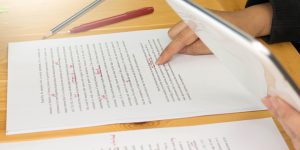Academic writing doesn’t have to be boring. While maintaining scholarly rigor, you can employ creative techniques that make your essays more engaging and memorable. The key lies in understanding how to balance creativity with academic expectations, producing work that both informs and captivates your readers.
Hook Your Readers from the Start
Forget the tired formula of starting with a dictionary definition or overly broad generalization. Instead, open with something that immediately grabs attention and draws readers into your topic. Consider beginning with a compelling anecdote that illustrates your main theme, a thought-provoking question that challenges common assumptions, or a striking statistic that highlights the importance of your subject.
Dialogue can be particularly effective for certain topics. Rather than easing into your argument with generic background information, you might open with a conversation between key figures that immediately establishes the central conflict or debate you’ll be exploring. This technique works especially well for essays dealing with ethical dilemmas, historical controversies, or social issues.
Vivid scene-setting can also create immediate engagement. Paint a picture of a specific moment, place, or situation that embodies the larger themes you’ll be discussing. This approach helps readers visualize abstract concepts and creates an emotional connection to your material.
Experiment with Structure and Format
Don’t feel confined to the traditional five-paragraph essay format, especially for longer assignments. Consider alternative structures that better serve your content and argument. You might organize your essay chronologically to show development over time, use a problem-solution format to address complex issues, or employ a compare-and-contrast structure to illuminate key differences.
Some topics benefit from a more creative organizational approach. For instance, you might structure an essay about social media’s impact using the format of a day in the life of a typical user, or organize a piece about environmental change around the four seasons. These creative frameworks can make complex information more accessible and memorable.
However, ensure that any structural creativity serves your argument rather than distracting from it. Your chosen format should enhance understanding and engagement, not confuse readers or obscure your main points.
Incorporate Storytelling Elements
Humans are naturally drawn to stories, so incorporating narrative elements can significantly enhance your essay’s impact. This doesn’t mean turning your academic paper into fiction, but rather using storytelling techniques to make your points more compelling and relatable.
Use specific examples and case studies as mini-narratives within your larger argument. Instead of discussing abstract concepts in general terms, ground your analysis in concrete situations that readers can visualize and understand. These stories serve as evidence while also maintaining reader interest.
Character development techniques can be valuable when writing about historical figures, literary characters, or contemporary individuals. Rather than simply listing facts about these people, explore their motivations, conflicts, and growth. This approach helps readers connect emotionally with your subject matter.
Language and Style Innovation
While maintaining appropriate academic tone, you can still make your language more vivid and engaging. Choose specific, concrete words over vague generalizations. Instead of writing “the economy was affected,” explain exactly how it was impacted using precise, descriptive language.
Incorporate sensory details where appropriate to help readers experience your subject matter more fully. This technique works particularly well in essays about literature, history, or cultural topics where you can describe settings, atmospheres, or physical experiences.
Use metaphors and analogies strategically to clarify complex concepts. A well-chosen comparison can make difficult ideas accessible while adding creative flair to your writing. Just ensure your metaphors enhance understanding rather than creating confusion.
Remember that creativity in academic writing should always serve your argument and enhance clarity. The goal is to make your ideas more accessible and memorable, not to showcase your artistic abilities at the expense of scholarly rigor.
